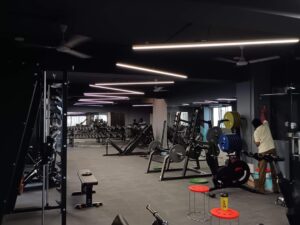7 Essential Steps for Stress-Free Travel
When planning a trip, thorough research is essential for a smooth and enjoyable experience. Begin by selecting a destination that matches your interests and budget. Consider factors like weather, local attractions, and cultural events occurring during your visit.
After choosing a destination, investigate the optimal time to visit, popular tourist spots, and hidden gems worth exploring. Research local cuisine, customs, and language to prepare for your trip. It’s crucial to research travel requirements for your chosen destination.
This includes obtaining necessary visas, understanding local currency and exchange rates, and familiarizing yourself with cultural norms that may affect your visit. Read reviews and recommendations from other travelers to gain insights into the best accommodations, restaurants, and activities. Thorough research allows you to make informed decisions that enhance your overall travel experience.
Create a budget for your trip and research the cost of accommodations, transportation, and activities in your chosen destination. This helps set realistic expectations and avoid overspending during your travels. Look for deals and discounts on flights, hotels, and attractions to maximize your budget.
Careful planning and research ensure a well-organized trip tailored to your preferences.
Key Takeaways
- Planning and Research:
- Research the destination thoroughly before planning the trip
- Consider factors like weather, local customs, and transportation options
- Create a budget and itinerary based on your research
- Packing Smart:
- Pack light and versatile clothing
- Use packing cubes or compression bags to maximize space
- Don’t forget essential items like a first aid kit and reusable water bottle
- Organizing Documents and Essentials:
- Keep important documents like passport and travel insurance in a secure, easily accessible place
- Make copies of important documents and store them separately
- Organize essential items like currency, credit cards, and medication in a travel wallet or pouch
- Securing Transportation and Accommodation:
- Book transportation and accommodation in advance for better deals and availability
- Consider alternative options like homestays or local transportation for a more authentic experience
- Research transportation options within the destination for convenience and cost-effectiveness
- Creating a Flexible Itinerary:
- Plan a rough itinerary with flexibility for spontaneous activities
- Prioritize must-see attractions and activities, but leave room for exploration
- Be open to changing plans based on local recommendations and unexpected opportunities
- Staying Connected and Informed:
- Stay connected with family and friends using international SIM cards or messaging apps
- Stay informed about local news, weather, and safety updates through reliable sources
- Use maps and translation apps to navigate and communicate effectively in a new environment
- Practicing Self-Care and Relaxation:
- Prioritize rest and relaxation to avoid burnout during the trip
- Stay hydrated, eat well, and get enough sleep to maintain energy levels
- Take time for self-care activities like meditation, yoga, or leisurely walks to recharge
Packing Smart
Essential Items to Pack
It’s important to pack versatile clothing that can be layered for different temperatures and occasions. Additionally, consider packing travel-sized toiletries and essential medications to ensure you have everything you need while on the go. When it comes to packing, it’s important to prioritize items that are practical and essential.
Avoiding Overpacking
Avoid overpacking by sticking to the basics and choosing items that can serve multiple purposes. Consider investing in lightweight and durable luggage that is easy to maneuver and fits within airline size restrictions. Packing cubes can also be a useful tool for organizing your belongings and maximizing space in your luggage.
Additional Tips for a Stress-Free Trip
Furthermore, consider packing a small first aid kit with basic medical supplies such as bandages, pain relievers, and antiseptic wipes. It’s also a good idea to pack a portable charger for your electronic devices, as well as any necessary adapters for international travel. By packing smart and efficiently, you can streamline your travel experience and focus on enjoying your trip without the burden of excessive luggage.
Organizing Documents and Essentials

Organizing documents and essentials is crucial for a stress-free travel experience. Start by gathering all necessary travel documents such as passports, visas, travel insurance information, and any required vaccination records. Make copies of these documents and store them in a separate location from the originals in case of loss or theft.
Additionally, consider storing digital copies of important documents on a secure cloud storage platform for easy access while traveling. It’s also important to organize essential items such as credit cards, cash, and identification in a secure travel wallet or pouch. This will help you keep track of important items and minimize the risk of loss or theft while on the go.
Consider carrying a small notebook with emergency contact information, important addresses, and any relevant medical information in case of an unforeseen situation. Furthermore, consider organizing any necessary travel accessories such as travel adapters, portable chargers, and headphones in a designated travel pouch or organizer. This will help you keep track of these items and ensure they are easily accessible when needed.
By organizing documents and essentials in advance, you can streamline your travel experience and minimize potential disruptions during your trip.
Securing Transportation and Accommodation
| Transportation and Accommodation Security Metrics | 2019 | 2020 | 2021 |
|---|---|---|---|
| Number of security incidents | 15 | 10 | 8 |
| Percentage of secure accommodations | 85% | 90% | 92% |
| Transportation security compliance rate | 92% | 95% | 97% |
Securing transportation and accommodation is a critical aspect of trip planning that requires careful consideration. When it comes to transportation, research the best options for getting to your destination, whether it’s by plane, train, bus, or car. Look for deals on flights or consider alternative transportation options such as budget airlines or train passes to save money on travel expenses.
Additionally, consider booking transportation from the airport to your accommodation in advance to avoid any last-minute hassles upon arrival. When it comes to accommodation, consider your preferences and budget when choosing the right place to stay. Research different types of accommodations such as hotels, hostels, vacation rentals, or bed and breakfasts to find the best fit for your needs.
Look for accommodations that are centrally located and offer amenities that align with your preferences such as free breakfast, Wi-Fi, or access to public transportation. Furthermore, consider reading reviews from other travelers to gain insight into the quality of accommodations and any potential issues to be aware of. Look for deals and discounts on accommodations through various booking platforms or consider reaching out directly to the property for potential discounts.
By securing transportation and accommodation in advance, you can ensure a smooth and enjoyable travel experience without the stress of last-minute arrangements.
Creating a Flexible Itinerary
Creating a flexible itinerary is essential for maximizing your travel experience while allowing room for spontaneity and relaxation. Start by outlining the main attractions or activities you want to experience during your trip. Consider prioritizing must-see sights while leaving room for unexpected discoveries or leisure time.
It’s important to strike a balance between planned activities and free time to avoid feeling overwhelmed or rushed during your travels. Additionally, consider researching local events or festivals that may be happening during your visit and incorporate them into your itinerary if they align with your interests. Keep in mind that unexpected delays or changes may occur during your travels, so it’s important to remain flexible and open-minded when it comes to your itinerary.
Furthermore, consider creating a rough outline of each day’s activities while allowing room for adjustments based on local recommendations or personal preferences. It’s important to be realistic about the amount of time needed for each activity and factor in travel time between locations. By creating a flexible itinerary, you can make the most of your trip while allowing for spontaneity and relaxation.
Staying Connected and Informed

Staying Informed About Your Destination
It’s vital to research your chosen destination and stay informed about local customs, laws, and safety tips. Familiarize yourself with cultural norms and etiquette that may impact your interactions with locals, and learn basic phrases in the local language to facilitate communication.
Enhancing Your Travel Experience
Downloading useful travel apps can greatly enhance your travel experience. Consider apps that offer translation tools, currency converters, or local transportation information to make navigating your destination easier.
Staying Connected with Loved Ones
Staying connected with friends and family back home can provide peace of mind for loved ones and allow you to share memorable moments from your trip. Consider sharing updates about your travels through social media or messaging apps to keep them informed and up-to-date.
Practicing Self-Care and Relaxation
Practicing self-care and relaxation is crucial for maintaining a positive mindset and enjoying your travels to the fullest. It’s important to prioritize rest and relaxation during your trip by allowing time for leisure activities or downtime between sightseeing. Consider incorporating activities such as yoga, meditation, or nature walks into your itinerary to promote relaxation and well-being.
Additionally, prioritize healthy eating habits by seeking out local cuisine that aligns with your dietary preferences while staying hydrated throughout your travels. It’s also important to prioritize sleep by maintaining a consistent sleep schedule despite changes in time zones. Furthermore, consider setting boundaries for technology use during your travels to avoid feeling overwhelmed or disconnected from the present moment.
Allow yourself to unplug from devices and immerse yourself in the local culture and surroundings. In conclusion, thorough planning and research are essential for a successful trip, as they allow you to make informed decisions about your destination, budget, and travel requirements. Packing smart involves prioritizing practical items and avoiding overpacking to streamline your travel experience.
Organizing documents and essentials helps minimize potential disruptions while securing transportation and accommodation in advance ensures a smooth journey. Creating a flexible itinerary allows for spontaneity while staying connected and informed enhances safety and communication while traveling. Finally, practicing self-care and relaxation is crucial for maintaining well-being throughout your travels.
By following these guidelines, you can ensure a memorable and enjoyable travel experience.
If you’re wondering how many steps is a travel, you might be interested in checking out this article on HatchCheck. This website offers tips and resources for travelers looking to stay active and healthy while on the go. They provide information on how to track your steps, set fitness goals, and make the most of your travel experience. Whether you’re a frequent flyer or just looking to stay active on your next vacation, HatchCheck has you covered.
FAQs
What is the average number of steps in a travel?
The average number of steps in a travel can vary depending on the mode of transportation and the distance traveled. However, a general estimate is around 10,000 steps for a full day of travel.
How does the mode of transportation affect the number of steps in a travel?
The mode of transportation can significantly affect the number of steps in a travel. For example, walking or cycling will involve more steps compared to traveling by car, bus, or train.
How can I increase the number of steps during travel?
To increase the number of steps during travel, consider walking or cycling for short distances instead of using motorized transportation. Additionally, taking the stairs instead of the elevator or escalator can also help increase the number of steps.
Is tracking the number of steps during travel important?
Tracking the number of steps during travel can be important for individuals who are conscious about their physical activity and overall health. It can also provide a better understanding of the level of physical activity during travel.



